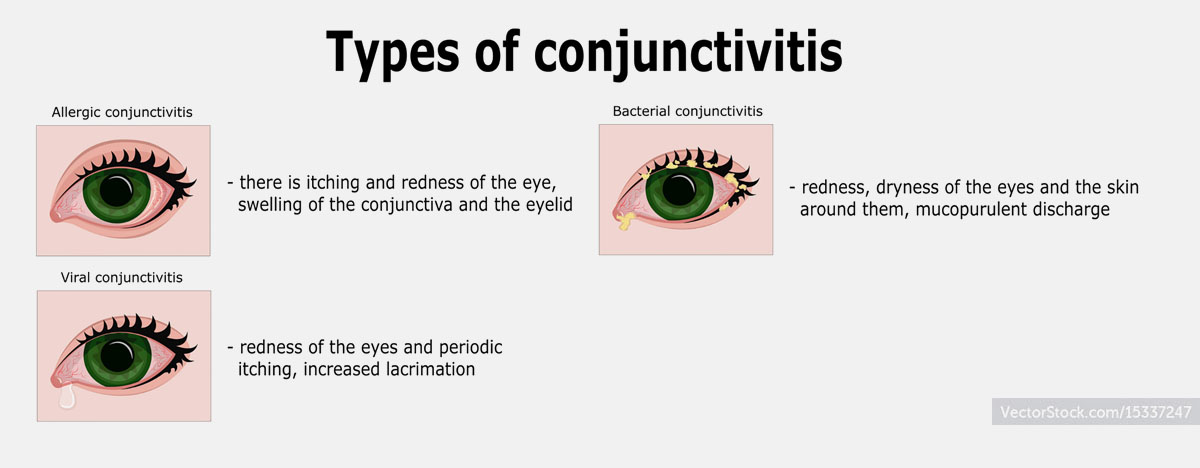Conjunctivitis
Conjunctivitis can be caused by infection from bacteria, viruses or other organisms, and also by allergy or inflammation.
Viral conjunctivitis tends to cause a watery red eye and can last for two to three weeks even with the correct treatment. In most cases viral conjunctivitis does not affect your vision but rarely you might notice your vision becomes blurry or you may see glare when looking at lights. This is due to an inflammatory reaction causing small white dots on the cornea, the transparent window at the front of the eye. These usually fade with time, but it can take a few weeks or even months.
Bacterial conjunctivitis is more likely to cause a red eye with a sticky yellow discharge.
Treatments for conjunctivitis
There is no antiviral medication for viral conjunctivitis and it does not respond to antibiotic drops as it is not caused by bacteria. The best treatment for viral conjunctivitis is to use artificial tears and simple painkillers, with regular lid cleaning and cold compresses. The conjunctivitis disappears when your body becomes immune to the virus and fights the germs off, just as in a cold or ‘flu. Very rarely, steroid drops are given for severe cases of viral conjunctivitis or when the cornea is affected.
Antibiotic drops can be helpful in cases of bacterial conjunctivitis and are often prescribed for a one or two-week course.
Contact lenses should not be worn during any type of conjunctivitis.
Preventing conjunctivitis from spreading
Conjunctivitis is contagious and spreads very easily by water droplets (coughing, sneezing) or contact with tissues, flannels, towels, pillowcases and so on. For that reason, it’s really important to wash your hands frequently and dispose of tissues after use to prevent the condition from spreading to other family members or work colleagues.

7October
